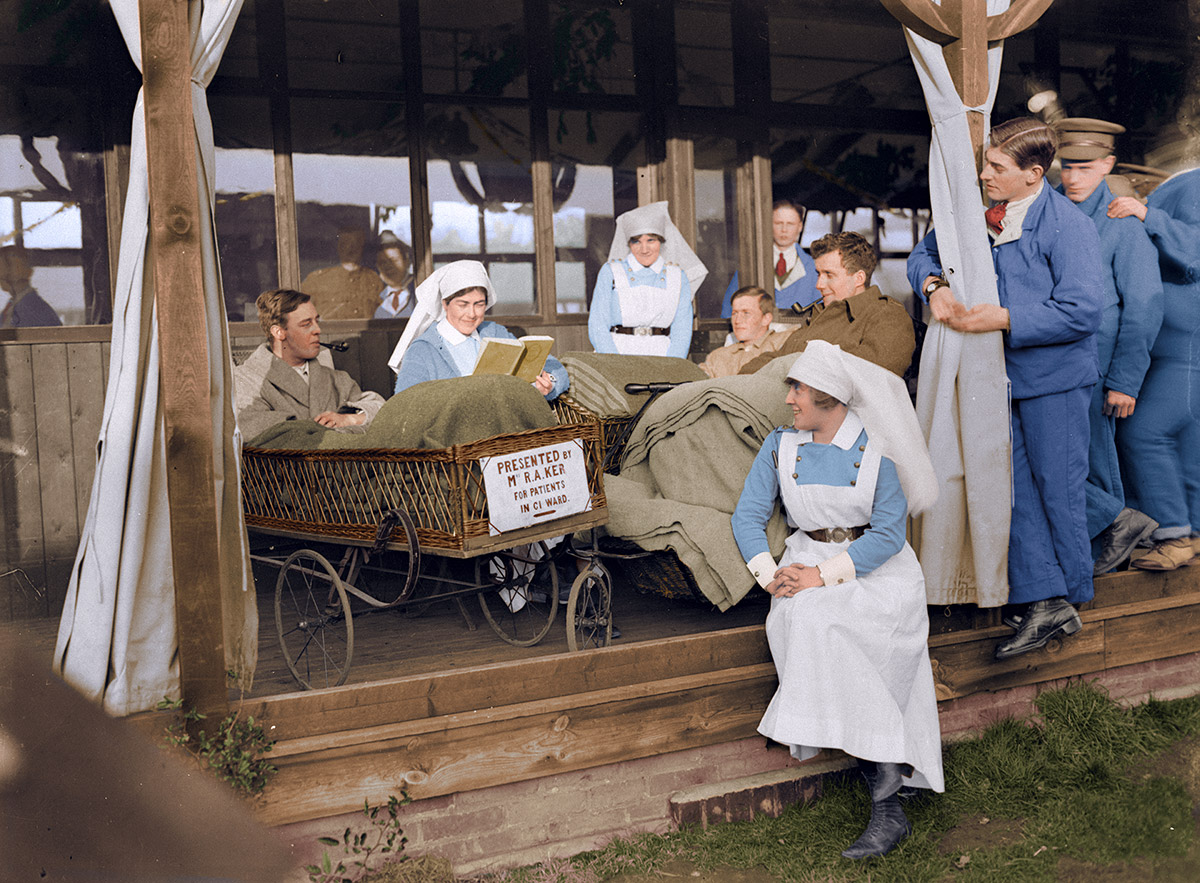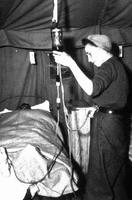Women have cared for wounded soldiers throughout Canada's wartime history. "Nursing sisters" carried out official duties with the military during the North-West Resistance, the South African War, the First and Second World Wars, and the Korean War. At least 70 nursing sisters died from enemy action and disease during their service.
North-West Resistance
Until the North-West Resistance of 1885, women who cared for soldiers wounded in war received no official military recognition. That changed when armed rebellion broke out in western Canada in 1885. The surgeon general of the Canadian Militia asked Hannah Grier Coome, mother founder of the Sisterhood of St John the Divine in Toronto, and Kate Miller, head nurse at the Winnipeg General Hospital, to arrange for the care of the wounded in Saskatchewan.
South African War (Boer War)
During the South African War (1899–1902), women volunteering for nursing service were sent overseas under Georgina Pope, to serve with the British Medical Staff Corps as nursing sisters. Although called nursing sisters, not all the nurses were members of religious nursing orders. A total of 12 women went to South Africa for three periods of time. The third group sent in 1902 were granted the relative rank of lieutenant in the British military forces in South Africa.
First World War
In the First World War (1914–18) 2,845 nursing sisters with officer rank – members of the Canadian Army Medical Corps (CAMC) — served in Canada, England, France, Belgium, Russia, and around the Mediterranean. Nicknamed the"bluebirds" by soldiers grateful for a glimpse of their blue dresses and white veils, they received many honours and gained a high reputation for their courage and compassion. At least 58 lost their lives during the war, victims of either enemy attack or disease contracted from patients. Fourteen nursing sisters died when the Canadian hospital ship Llandovery Castle was torpedoed and sunk by a German U-boat on the evening of 27 June 1918. (See also Canadian Army Medical Corps Nursing Sisters.)
Did you know?
Some Canadian nurses served with foreign nursing corps during the First World War. In 1917, fifteen nurses from Canada joined the United States Army Nurse Corps and served in France, much of the time at Buffalo Base Hospital 23 in St. Vittel. Among them was Edith Monture, who was the first Indigenous woman to become a registered nurse in Canada and to gain the right to vote in a Canadian federal election.
Second World War
During the Second World War (1939–45) thousands of nurses rushed to enlist. By the war's end, 4,480 nursing sisters had served — 3,656 with the re-named Royal Canadian Army Medical Corps, 481 with the Royal Canadian Air Force Medical Branch and 343 with the Royal Canadian Naval Medical Service. On duty overseas and in Canada, they staffed more than 100 major hospital units and cared for hundreds of thousands of wounded Canadians and soldiers from other countries.
The nursing sisters during the world wars received lectures on military law, map reading and security, instruction in gas warfare and casualty evacuation, and training in large-scale military manoeuvres. They worked in conditions ranging from canvas tents with wooden floors to established hospitals and buildings converted for hospital use. One group was torpedoed while on a ship in transit to Italy, two nurses (May Waters and Kay Christie) were interned for 21 months as prisoners of war in Hong Kong, and others were casualties of accidents and disease. At least 12 Canadian military nurses died in the Second World War. One, Agnes Wilkie, died as the result of enemy action, while the others died due to accidents or disease.
Did you know?
Nursing Sister Agnes Wilkie was a passenger on the ferry SS Caribou when it was sunk by a German torpedo in the Cabot Strait off Newfoundland. Despite the efforts of her companion, Nursing Sister Margaret Brooke, she died in the cold waters of the Atlantic Ocean. For her heroism, Brooke was made a Member of the Order of the British Empire (MBE), the first Canadian nursing sister so recognized.
Korean War
Approximately 100 Canadian nursing sisters served in the Korean War (1950–53) as part of United Nations forces in that conflict. Sixty were members of the Royal Canadian Army Medical Corps who served in Korea and Japan. As in previous conflicts, these nursing sisters treated battle-related injuries and infectious disease, including venereal disease. Another 40 women served in the Royal Canadian Air Force as flight nurses on medical evacuation flights from Japan to the US and Canada from 1950 to 1955. (Approximately 50 nursing sisters served with the Royal Canadian Navy in this period; most were stationed at the naval hospitals in Esquimalt, British Columbia, and Halifax, Nova Scotia.)
Nurses (now known as Nursing Officers) have served in the Canadian Armed Forces both at home and overseas since that time.

 Share on Facebook
Share on Facebook Share on X
Share on X Share by Email
Share by Email Share on Google Classroom
Share on Google Classroom








